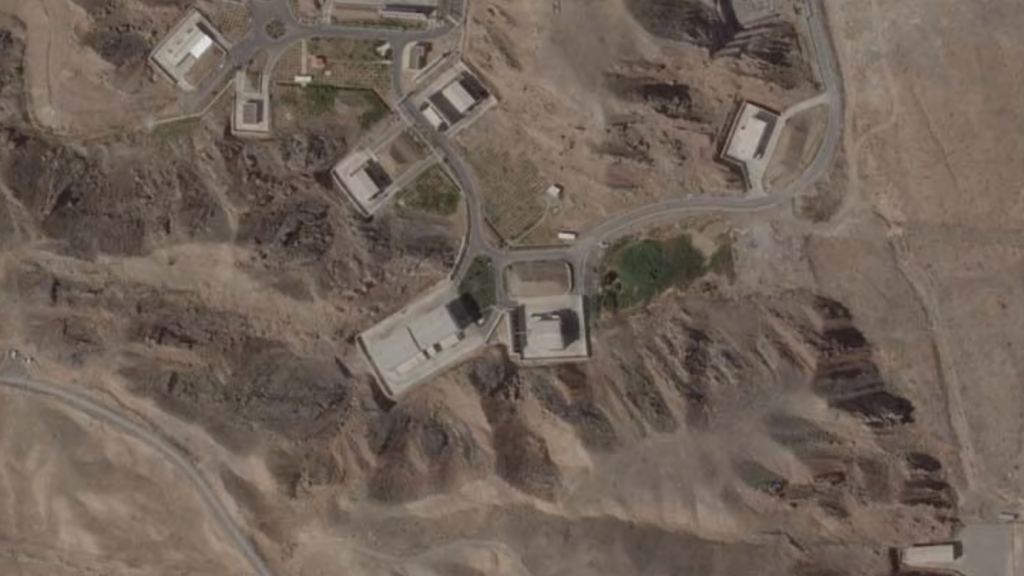Israel’s next attack on Iran

First published in Arabic at Al-Quds al-Arabi. Translation from Gilbert Achcar's blog.
In my commentary on the Zionist state’s retaliatory strike on Iran on 19 April, I considered the limited, almost symbolic nature of the strike, which restrained itself to targeting an air defence system dedicated to the protection of Iran’s uranium enrichment reactor in Natanz. I explained at the time that the Netanyahu government had chosen “to postpone the date of a large-scale strike … in accordance with Washington’s desire and for related economic and military considerations”, including the need to compensate for what it took to confront the Iranian attack that preceded the Israeli response by six days. I then added: “Moreover, according to U.S. and Israeli media, U.S. President Biden gave Netanyahu the green light for the offensive on Rafah in exchange for Israel refraining at present from launching a major strike against Iran. This indicates that the Zionist state will complete the genocidal war that it has been waging against Gaza for six and a half months, before inexorably directing its military efforts against Iran and its Lebanese auxiliary, Hezbollah.” (“The Postponed Israeli Attack on Iran”, 23 April 2024).
This is what happened indeed. Israel’s occupation forces invaded Rafah on 6 May, then completed their control over the Strip and waited for the summer season to end before launching their large-scale attack on Hezbollah. Before that time, Israel had escalated its provocation of Iran by assassinating Ismail Haniyeh in the middle of Tehran on July 31. Iran hesitated to respond to this assassination of one of its allies in its own backyard until Israel assassinated Hassan Nasrallah in Beirut, along with Brigadier General Abbas Nilforoushan of the Iranian Revolutionary Guard Corps. This was the second high-ranking officer of the Corps to be assassinated by Israel after Major-General Mohammad Reza Zahedi. The latter was killed in the Iranian consulate in Damascus on the 1st of April, in an operation that prompted Tehran to launch its first retaliatory attack on Israel on 13 April.
Tehran decided to qualitatively escalate its second retaliatory attack on Israel launched on the 1st of this month by making a more extensive use of ballistic missiles, which the Zionist forces cannot intercept in totality, launching about 200 of them (in April, 9 out of 55 ballistic missiles that entered the airspace above Israel’s interception system passed through the holes in the net — see the above-quoted article). The escalation was inevitable after Tehran had begun to lose credibility, especially among its Arab Shiite supporters, the Lebanese in particular. It was keen, however, to keep its attack, this time as well, within limits that would not bring about a large-scale Israeli attack with direct US participation. Tehran knows that the administration of US President Joe Biden is not willing to participate in such an attack before the US elections, for fear that it may backfire on Vice President Kamala Harris’s presidential campaign.
Biden therefore demanded from Netanyahu that the Israeli attack too remain limited in a way that would not harm Harris’s campaign. He asked him to avoid Iranian oil facilities for fear that Tehran would respond by disrupting all oil exports from the Gulf, thus causing a severe crisis in the global oil market, with a sharp rise in prices that could have a disastrous effect on the VP’s campaign. Biden also asked Netanyahu not to launch a direct strike on Iran’s nuclear facilities, knowing that Israel alone does not have the ability to destroy them anyway. The only effect of attacking those facilities without destroying them might well be to hasten Iran’s development of nuclear weapons. As for what Biden promised Netanyahu in exchange for his restraint this time, it has not been disclosed yet. However, the US administration’s decision to send a THAAD anti-ballistic missile defence system to Israel, with a hundred soldiers to operate it, constitutes a qualitative step in transforming US participation in the ongoing Zionist onslaught from indirect to direct, through the deployment of US soldiers alongside Israel’s forces — not to mention the reinforcement of US air force presence in the region with additional squadrons of F-16, F-15E, and A-10.
The nature of the attack carried out by the Israeli Air Force last Saturday is very significant for the near future. This attack, the first on Iran officially claimed by the Zionist state, focused on destroying the anti-aircraft defences surrounding the capital, Tehran, and Iran’s nuclear facilities, as well as destroying the giant fuel mixers that Tehran uses to make the fuel needed for its missiles (the attack also killed four Iranian soldiers). The Israeli attack thus clearly constituted a prelude to a subsequent attack on Iran by weakening Iran’s defensive capabilities and its ability to manufacture more surface-to-air missiles and ballistic missiles.
Netanyahu is now waiting for Tuesday’s elections to decide his next move: If Trump wins, he will consult him to see if he is prepared to carry out a large-scale joint US-Israeli attack with the primary goal of destroying Iran’s nuclear facilities. Achieving this goal would require the B-2 strategic bombers that the US Air Force alone possesses, which can carry the GBU-57 bunker-buster bombs, each weighing about 15 tons, that Israel does not possess either. If Harris wins, Netanyahu will likely strive to drag Biden into carrying out the attack with him. This could then be Biden’s final and greatest gift to the Zionist state after serving its interests for half a century, in a unique dedication for which Netanyahu publicly thanked him during his last visit to the White House end of last July.